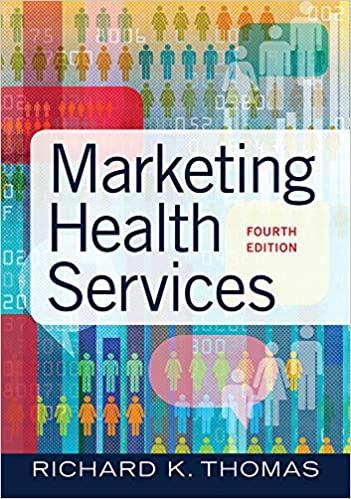After the US Food and Drug Administration relaxed its rules on mass media advertising of prescription drugs,
Question:
After the US Food and Drug Administration relaxed its rules on mass media advertising of prescription drugs, pharmaceutical companies began to engage in direct-to-consumer marketing. Rather than rely strictly on the prescribing activities of physicians, these companies believed that direct appeals to consumers would increase overall pharmaceutical sales and, at the same time, convince consumers to request particular drugs. To take advantage of this opportunity, GoodDrugs, Inc. shifted a portion of its advertising budget to direct-to-consumer marketing. This advertising supplemented existing marketing approaches: visits by sales representatives to physicians’ offices, advertising in medical journals, and the presentation of educational seminars to physicians.
GoodDrugs planned and implemented a six-month television campaign to promote its best-selling (and most profitable) drug for indigestion. Because the drug was available only by prescription, the intent of the campaign was to raise awareness of the drug and get consumers to ask their doctors to prescribe it.
At the end of the six-month campaign, GoodDrugs conducted a telephone survey of consumers in the media coverage area. The results were encouraging. Consumers were aware of the drug: Half of the survey respondents remembered the advertisement for the drug, and one-quarter of them recalled the drug’s name. About 25 percent of those who had seen the advertisement said they had asked their doctor about using this drug for indigestion, and physicians wrote prescriptions for 71 percent of those who asked for one. Therefore, approximately 6 percent of the consumers who were exposed to the advertisement received a prescription for the drug.
GoodDrugs marketers and sales executives were encouraged by the results of the television campaign. It generated greater consumer awareness of their product, an increase in consumer preference for the drug, and an increase in desired physician prescribing behavior. As a result, GoodDrugs reworked its marketing budget, shifting resources away from personal sales and journal advertising and toward direct-to-consumer advertising.
Questions
1. What limitations were historically placed on pharmaceutical advertising, and what development encouraged drug companies to take more aggressive action?
2. What factors prompted pharmaceutical companies to shift some of their marketing efforts from physician-prescribers to consumers?
3. According to the GoodDrugs marketing team’s evaluations, what were the results of the campaign?
4. What did the GoodDrugs marketers do as a result of this campaign?
5. How appropriate is it for pharmaceutical companies to market directly to consumers who may not be in a position to judge the merits of a particular drug?
Step by Step Answer:






